
Kód: 01631200
Credit Rating and the Impact on Capital Structure
Autor Christian Kronwald
Seminar paper from the year 2009 in the subject Business economics - Banking, Stock Exchanges, Insurance, Accounting, printed single-sided, grade: 1,3, University of Hohenheim (Lehrstuhl für Bankwirtschaft und Finanzdienstleistung ... celý popis
- Jazyk:
 Angličtina
Angličtina - Vazba: Brožovaná
- Počet stran: 72
Nakladatelství: Grin Publishing, 2010
- Více informací o knize

Mohlo by se vám také líbit
Dárkový poukaz: Radost zaručena
- Darujte poukaz v libovolné hodnotě a my se postaráme o zbytek.
- Poukaz se vztahuje na celou naši nabídku.
- Elektronický poukaz vytisknete z e-mailu a můžete ihned darovat.
- Platnost poukazu je 12 měsíců od data vystavení.
Více informací o knize Credit Rating and the Impact on Capital Structure
Nákupem získáte 112 bodů
 Anotace knihy
Anotace knihy
Seminar paper from the year 2009 in the subject Business economics - Banking, Stock Exchanges, Insurance, Accounting, printed single-sided, grade: 1,3, University of Hohenheim (Lehrstuhl für Bankwirtschaft und Finanzdienstleistungen), language: English, abstract: The question about capital structure is one of the most important issues which the management of a company faces in implementing their daily business. Therefore, the question of which factors affect capital structure decisions attracts high attention in the past and recent literature on capital structure. There are many papers providing valuable insights into capital structure choices, starting with the paper of Modigliani and Miller (1958). The MM-Theorem is generally considered a purely theoretical result since it ignores important factors in the capital structure decision like bank-ruptcy costs, taxes, agency costs and information asymmetry. Based on this paper many other theories which consider factors neglected by Modigliani and Miller have been evolved. Two major theories are the Tradeoff- and the Pecking-Order-Theory. The former loosens assumptions stated in the MM-Theorem by including bankruptcy costs and taxes while the latter introduces information asymmetry into the capital structure discussion. Chapter 2.1 will give a brief overview of these theories. For complexity reasons these models cannot capture all relevant factors affecting the capital structure policy of a company. However, all these theories disregard one cru-cial factor which plays an important role on capital markets all over the world. The significance of Credit Ratings is gradually increasing, and it is doing so in many re-spects. This paper focuses on the Credit Rating-Capital Structure-Hypotheses (CRCS) developed by Darren J. Kisgen as a modern approach to the capital structure discussion. The hypothesis argues that credit ratings have an impact on capital struc-ture decisions due to discrete costs (benefits) associated with a rating change. Firstly, reasons why credit ratings are material for capital structure decisions will be out-lined. Then, situations in which credit rating effects play a role will be examined. For this issue it is very important to show how it can be measured whether a firm is con-cerned about a rating change or not. Afterwards the CR-CS will be empirically tested. The traditional theories don t explain the results obtained in these tests. Therefore credit rating effects will be combined with factors discussed in the Tradeoff- and Pecking-Order-Theory. In subsequent empirical tests credit rating factors will be integrated into previous capital structure test to show that the results of the CR-CS tests remain statistically significant...
 Parametry knihy
Parametry knihy
Zařazení knihy Knihy v angličtině Economics, finance, business & management Industry & industrial studies
1121 Kč
- Plný název: Credit Rating and the Impact on Capital Structure
- Autor: Christian Kronwald
- Jazyk:
 Angličtina
Angličtina - Vazba: Brožovaná
- Počet stran: 72
- EAN: 9783640575497
- ISBN: 3640575490
- ID: 01631200
- Nakladatelství: Grin Publishing
- Hmotnost: 104 g
- Rozměry: 210 × 148 × 4 mm
- Datum vydání: 30. March 2010
Oblíbené z jiného soudku
-

ISE Film History: An Introduction
2100 Kč -

Barbie and Ruth
303 Kč -

One From Many; VISA and the Rise of the Chaordic Organization
624 Kč -
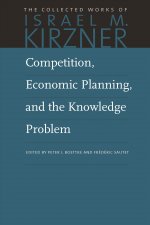
Competition, Economic Planning & the Knowledge Problem
542 Kč -

Logistics and Supply Chain Management Projects
2405 Kč -
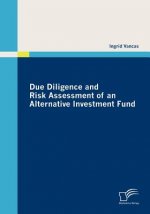
Due Diligence and Risk Assessment of an Alternative Investment Fund
1890 Kč -
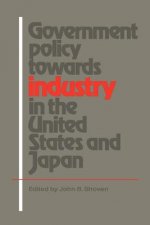
Government Policy towards Industry in the United States and Japan
1404 Kč -

Howard Hughes, Hell's Angel
790 Kč -
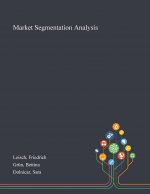
Market Segmentation Analysis
1397 Kč -

Family Friendly Farming
945 Kč -
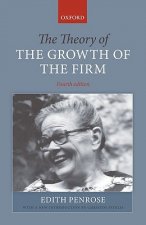
Theory of the Growth of the Firm
1535 Kč -

Mercedes Benz Adenauer: Legenden sind rot. (Tischkalender 2024 DIN A5 quer), CALVENDO Monatskalender
780 Kč -
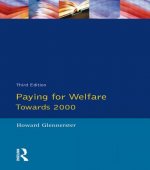
Paying For Welfare
1942 Kč -

Industrial Safety and Risk Management
1508 Kč -

Second Industrial Divide
1057 Kč -

Convention Tourism
2269 Kč -
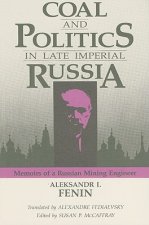
Coal and Politics in Late Imperial Russia
1448 Kč -

Art of Luxury Selling
2054 Kč -

Messerschmitt Kabinenroller KR 200 Fahren unter dem Radar (Wandkalender 2024 DIN A4 quer), CALVENDO Monatskalender
558 Kč -

Mercedes Benz Adenauer: Legenden sind rot. (Wandkalender 2024 DIN A4 quer), CALVENDO Monatskalender
780 Kč -

Inside Reporting
4867 Kč -

Messerschmitt Kabinenroller KR 200 Fahren unter dem Radar (Wandkalender 2024 DIN A2 quer), CALVENDO Monatskalender
1511 Kč -

Cultural Tourism
1890 Kč -

Joint Ventures, Alliances and Corporate Strategy
1053 Kč -

The Palgrave Handbook of Consumerism Issues in the Apparel Industry
6434 Kč -

Rolls-Royce
5094 Kč -

Messerschmitt Kabinenroller KR 200 Fahren unter dem Radar (Wandkalender 2024 DIN A3 quer), CALVENDO Monatskalender
804 Kč -

Museum Management
1681 Kč -

Mercedes Benz Adenauer: Legenden sind rot. (Wandkalender 2024 DIN A2 quer), CALVENDO Monatskalender
1783 Kč -

Modernes Hospitality Marketing
1203 Kč -

BMW R69S (Tischkalender 2024 DIN A5 quer), CALVENDO Monatskalender
535 Kč -

Fashion Heritage
5985 Kč -
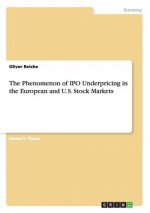
Phenomenon of IPO Underpricing in the European and U.S. Stock Markets
1879 Kč -
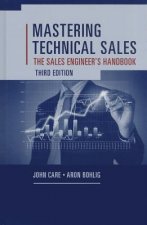
Mastering Technical Sales: The Sales Engineer's Handbook, Third Edition
2970 Kč -

Industry and Competition Analysis of Airbus and Boeing
2076 Kč -
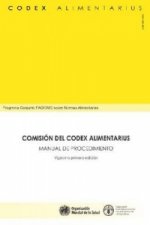
Procedural Manual of the Codex Alimentarius Commission
1475 Kč -

Kaizen Assembly
4267 Kč -

Competition, Economic Planning and the Knowledge Problem
340 Kč -

Wiley
1165 Kč -

Landwirtschaft - Hightech auf dem Feld (Wandkalender 2024 DIN A2 quer), CALVENDO Monatskalender
1511 Kč -

Motorrad Oldtimer - Motoransichten (Tischkalender 2024 DIN A5 hoch), CALVENDO Monatskalender
535 Kč -

Alte Handwerkskunst Messerschmied (hochwertiger Premium Wandkalender 2025 DIN A2 quer), Kunstdruck in Hochglanz
1867 Kč -

Bio Zitrus Garten (Tischkalender 2025 DIN A5 quer), CALVENDO Monatskalender
547 Kč -

Große und kleine Flieger am Flughafen (hochwertiger Premium Wandkalender 2025 DIN A2 quer), Kunstdruck in Hochglanz
1867 Kč -

Landtechnik im Einsatz (Wandkalender 2025 DIN A2 quer), CALVENDO Monatskalender
1378 Kč -

Landwirtschaft - Hightech auf dem Feld (Wandkalender 2025 DIN A4 quer), CALVENDO Monatskalender
571 Kč -

Alte Handwerkskunst Messerschmied (Wandkalender 2025 DIN A3 quer), CALVENDO Monatskalender
816 Kč -

Giganten der Meere - Kreuzfahrtschiffe (Wandkalender 2025 DIN A4 quer), CALVENDO Monatskalender
645 Kč -

Das Handwerk der Schuhmacher (Tischkalender 2025 DIN A5 quer), CALVENDO Monatskalender
547 Kč
Osobní odběr Praha, Brno a 12903 dalších
Copyright ©2008-24 nejlevnejsi-knihy.cz Všechna práva vyhrazenaSoukromíCookies




 Vrácení do měsíce
Vrácení do měsíce 571 999 099 (8-15.30h)
571 999 099 (8-15.30h)